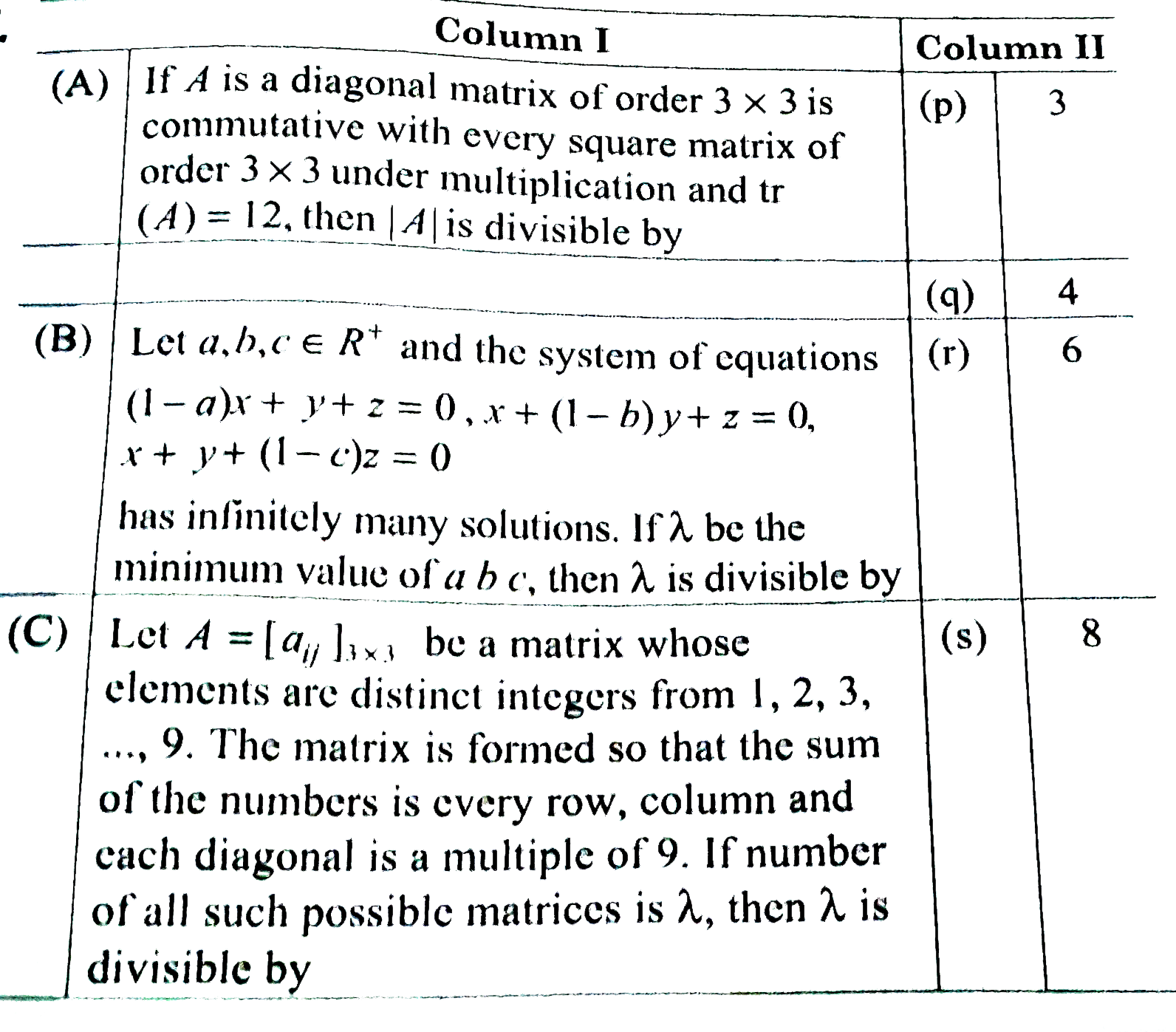The correct Answer is:(A)→(q,s);(B)→(p,t);(C)→(p,q,r,s);(D)→(q,s)
(A)→(q,s),(B)→(p,t),(C)→(p,q,r,s),(D)→(q,s)
(A) A diagonal matrix is commutative with every square
matrix, if it is scalar matrix, so every diagonal element is 4.
Therefore, |A|=∣∣
∣∣400040004∣∣
∣∣=64
(B) ∣∣
∣∣1−a1111−b1111−c∣∣
∣∣=0
Applying R1→R1−R3andR2→R2−R3, then
∣∣
∣∣−a0c0−bc111−c∣∣
∣∣=0
⇒−a(−b+bc−c)−0+c(b)=0
ab+bc+ca=abc ...(i)
Now, AM≥GM
⇒ab+bc+ca3≥(ab⋅bc⋅ca)13 ltbrlt ⇒abc3≥(abc)23 [from eq. (i)]
⇒(abc)13≥3
∴abc≥27
Hence, λ=27
(C) ∵A=⎡⎢⎣a11a12a13a21a22a23a31a32a33⎤⎥⎦
Given, 3∑k=1aik=9λi,∀j∈{1,2,3},
3∑k=1akj=9μj,∀j∈{1,2,3} and
a11+a22+a33=9υ, where λi,μj,v∈{1,2}
Following types of matrices are possible:
A=⎡⎢⎣135⎤⎥⎦,B=⎡⎢⎣234⎤⎥⎦,C=⎡⎢⎣738⎤⎥⎦,
D=⎡⎢⎣639⎤⎥⎦,E=⎡⎢⎣162⎤⎥⎦,F=⎡⎢⎣369⎤⎥⎦,
G=⎡⎢⎣468⎤⎥⎦,H=⎡⎢⎣567⎤⎥⎦,I=⎡⎢⎣198⎤⎥⎦,
J=⎡⎢⎣297⎤⎥⎦,K=⎡⎢⎣396⎤⎥⎦,L=⎡⎢⎣495⎤⎥⎦,
Now, if we interchange 1 and 5 to obtain
A1=⎡⎢⎣549738621⎤⎥⎦
Also, AT=⎡⎢⎣189234675⎤⎥⎦
and AT1=⎡⎢⎣576432981⎤⎥⎦
Then, from A we get four matrices A,A1,AT,AT1.
Similarly, from B,C,D,...,K,L we get 4 matrices.
Thus, total 12×4=48 matrices. Hence, λ=48.
(D) For consistent, ∣∣
∣
∣∣111c+2c+46(c+2)2(c+4)236∣∣
∣
∣∣=0
Applying C2→C2−C1, we get
∣∣
∣
∣∣101c+226(c+2)24c+1236∣∣
∣
∣∣=0
⇒2∣∣
∣
∣∣101c+216(c+2)22c+636∣∣
∣
∣∣=0
⇒−122c−0+1[(c+2)(2c+6)−(c+2)22]=0
⇒c2−6c+8=0
⇒c=2,4
∴c1=4,c2=2
⇒cc21=42=16
Topper's Solved these Questions
- MATRICES BOOK - ARIHANT MATHSCHAPTER - MATRICES EXERCISE - Exercise (Statement I And Ii Type Questions)
10 Videos
- MATRICES BOOK - ARIHANT MATHSCHAPTER - MATRICES EXERCISE - Exercise (Subjective Type Questions)
14 Videos
- MATRICES BOOK - ARIHANT MATHSCHAPTER - MATRICES EXERCISE - Exercise (Single Integer Answer Type Questions)
10 Videos
- MATHEMATICAL INDUCTION BOOK - ARIHANT MATHSCHAPTER - MATHEMATICAL INDUCTION EXERCISE - Exercise (Questions Asked In Previous 13 Years Exam)
2 Videos
- MONOTONICITY MAXIMA AND MINIMABOOK - ARIHANT MATHSCHAPTER - MONOTONICITY MAXIMA AND MINIMAEXERCISE - Exercise (Questions Asked In Previous 13 Years Exam)
31 Videos
Similar Questions
Statement-1 (Assertion and Statement- 2 (Reason)
Each of these questions also has four alternative
choices, only one of which is the correct answer. You
have to select the correct choice as given below.
Statement - 1 If mateix A=[aij]3×3,B=[bij]3×3, where aij+aji=0andbij−bji=0 then A4B5 is non-singular
matrix.
Statement-2 If A is non-singular matrix, then |A|≠0.
View SolutionIf s is a real skew-symmetric matrix, the show that I−S
is non-singular and matrix
A=(I+S)(I−S)−1=(I−S)−1(I+S) is orthogonal.
View SolutionLet A,B,C,D be (not necessarily ) real matrices such that AT=BCD,BT=CDA,CT=DABandDT=ABC for the matrix S=ABCD the least value of k such that Sk=S is
View SolutionStatement-1: For every natural number n≥2,
1√1+1√2+1√3+...+1√n>√n
Statement-2: For every natural number n≥2,
√n(n+1)<n+1
View SolutionThe least value of α∈R for which 4αx2+1x≥1, for all x>0, is
View SolutionHow many lines of symmetry does the above figure have ?
View SolutionWhich of the following are correct chain isomers of butane ? (i)
View SolutionDetermine the point of symmetry of a regular hexagon.
View SolutionDtermine the images of the following figure about the given line :
View SolutionMatch the following Column A to Column B
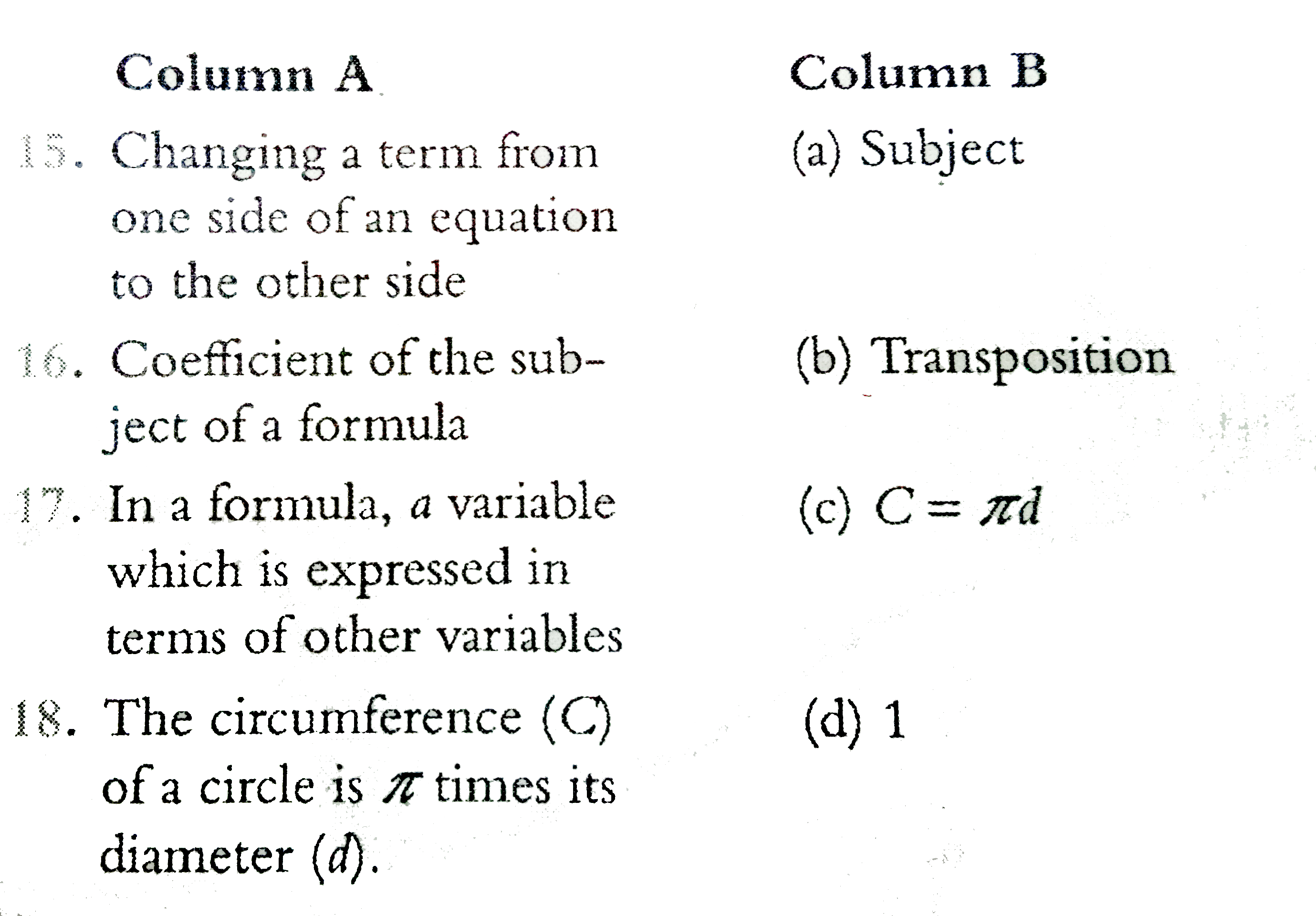
View SolutionMatch the following Column A to Column B
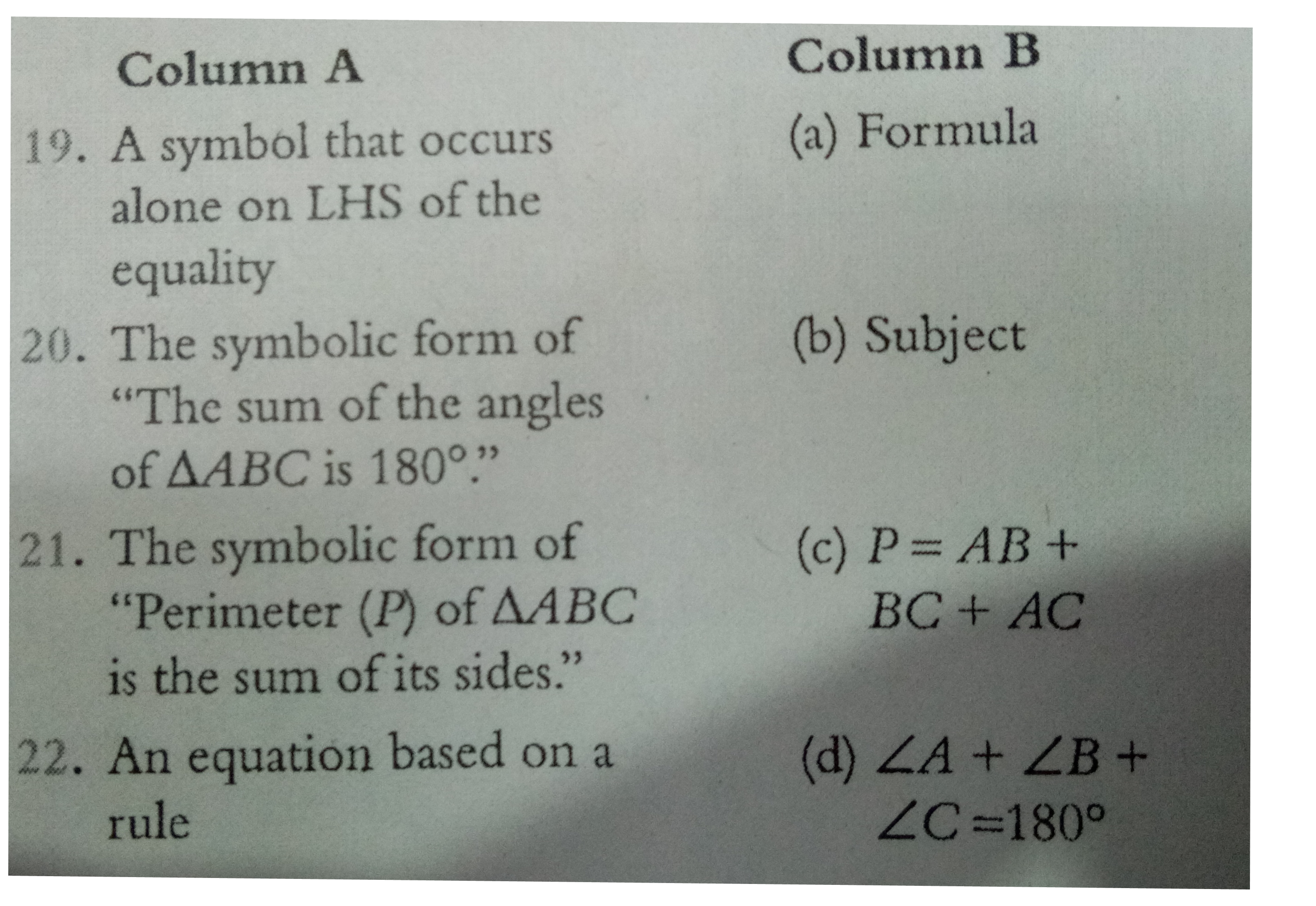
View SolutionMatch the following Column A to Column B
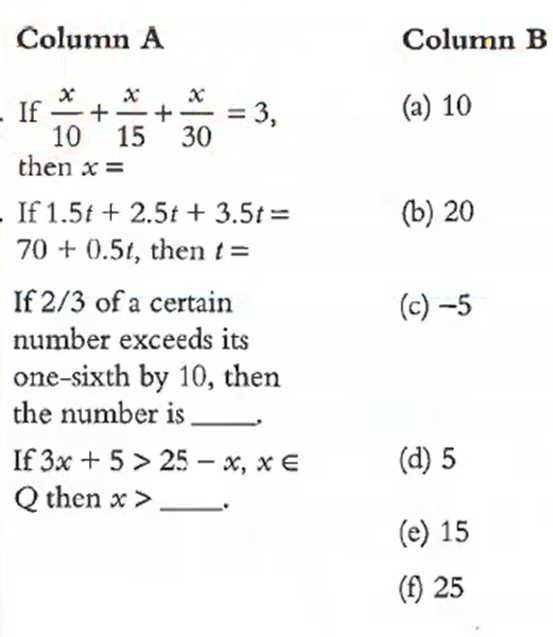
View SolutionFind the area of the figure given below.
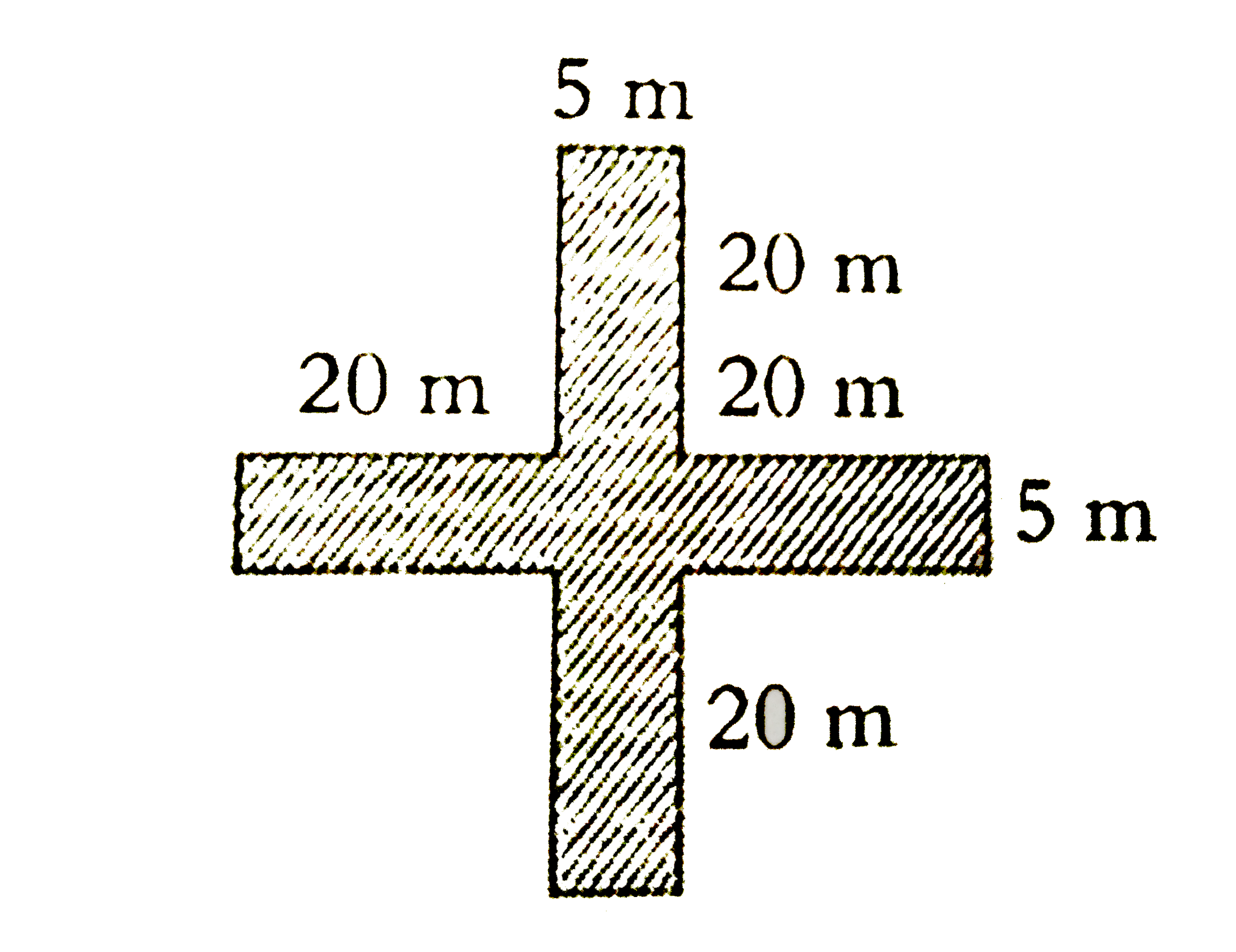
View SolutionThe area of the shaded part in the figure given below is ______.

View SolutionThe inequation represented by the graph given below is :
View SolutionThe inequation that best describes the graph given below is _________
View Solution
